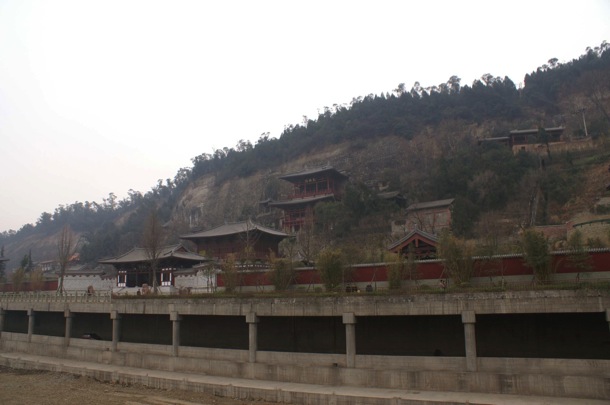|
||||||||||
|
FEATURESTemple of Imperial Favour, Sichuan 皇澤寺Sang Ye with Geremie R. Barmé
There has been a temple at the present location—now in Guangyuan City 廣元市, Sichuan—since the Northern and Southern Dynasties. It was previously called Wunu Temple 烏奴寺. It was renamed the Temple of Imperial Favour as a mark of respect for the Tang dynasty empress Wu Zetian 武則天, who was born nearby. A statue in the main hall, the Zetian Hall 則天殿, is said to be a likeness of the controversial empress. The statues visible carved into and placed in niches in the hill behind the temple date from the Northern Wei and the Tang dynasties.[Fig.1] All of the structures visible in Boerschmann's photograph were destroyed during the construction of the Baoji-Chengdu railroad in 1953. In the year 2000, the railroad was rerouted and the local government decided to develop the Temple of Imperial Favour as the largest tourist zone in northern Sichuan province. The first phase of the new tourism development plan has been completed.[Fig.2] Apart from imitation traditional buildings being thrown up, the area now also boasts contributions to what is termed 'red (or revolutionary) tourism' (hongse lüyou 紅色旅遊) in the form a Forest of Stelae of Red Army Revolutionary Slogans (Hongjun Geming Biaoyu Beilin 紅軍革命標語碑林) and a Commemorative Museum of the Northeast Sichuan Soviet (Chuan Dongbei Suwei'ai Jinianguan 川東北蘇維埃紀念館). Visitors can also stay at the Female Empress Mountain Villa Guest House (Nühuang Shanzhuang Binguan 女皇山莊賓館).
|
